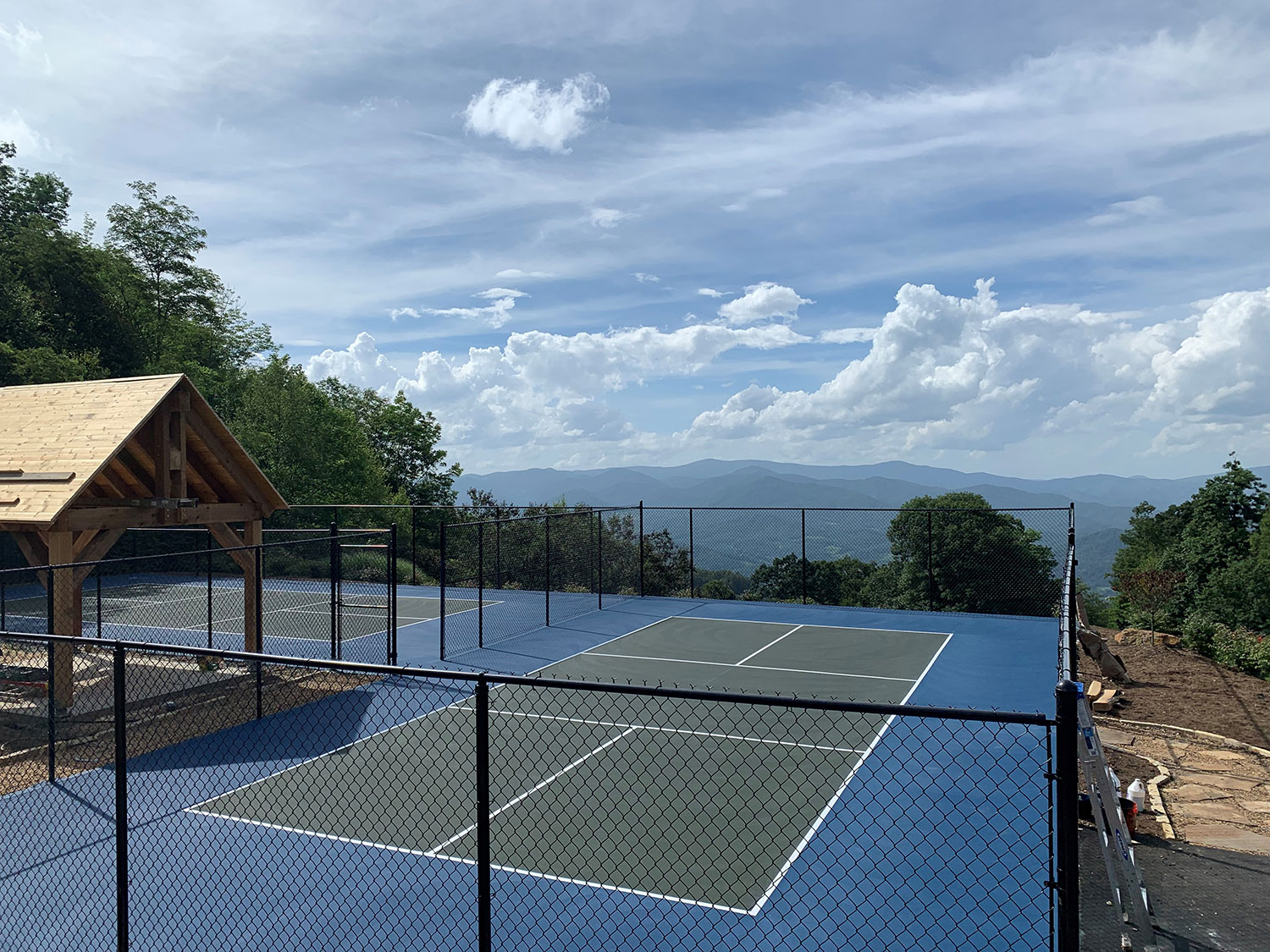Enhance Your Neighborhood With Specialist Pickleball Court Construction
The building and construction of specialist pickleball courts offers a distinct chance for neighborhoods to cultivate social communication and promote healthy lifestyles. Pickleball court construction company. By thoughtfully considering style components and area requirements, stakeholders can produce courts that reverberate with residents.
Benefits of Pickleball Courts
The building of devoted pickleball courts supplies many advantages that prolong beyond plain entertainment possibilities. Among one of the most considerable benefits is the promotion of area interaction and social interaction. By offering a designated area for this quickly expanding sport, areas can foster a feeling of belonging among players of every ages and skill levels. This addition motivates friends and families to take part together, enhancing social bonds.
Additionally, dedicated pickleball courts can add to improved physical health and wellness within the area. As the sporting activity is easily accessible and reasonably simple to find out, it attracts individuals that may not or else involve in routine exercise. The combination of cardio task and control needed in pickleball assists enhance cardiovascular wellness, adaptability, and total fitness.
Furthermore, the establishment of pickleball courts can increase home worths in the surrounding location. Possible homebuyers typically look for areas with leisure services, and devoted sporting activities facilities can improve the appeal of an area.
Key Layout Factors To Consider

Surface product considerably influences gameplay and gamer convenience. Choices such as asphalt, concrete, or specialized sports surfaces can influence round bounce and gamer agility. Additionally, proper surface water drainage will certainly decrease water buildup, guaranteeing the courts remain usable in various weather.
Illumination is another important component, particularly for evening play. Ample lighting ought to be evenly dispersed to get rid of shadows and enhance presence. Furthermore, consideration should be offered to the alignment of the courts to lessen sunlight glow during height hours.
Finally, accessibility and area combination are necessary. Courts should be easy to gain access to for all gamers, including those with handicaps, and must be developed to blend perfectly into existing community rooms, fostering an inviting atmosphere for social communication and entertainment usage.
Steps in Court Construction
Effective building of pickleball courts includes a series of well-defined steps to make certain quality and compliance with well-known standards. Pickleball court construction company. The process begins with detailed site analysis, assessing factors such as soil drain, room, and stability schedule. A precise study is essential to identify the optimal design and alignment of the courts
Following, comprehensive preparation and style happen, consisting of the selection of materials and surface area kinds that adapt to the official requirements for pickleball play. Following approval of the designs, excavation and grading commence. This step guarantees a degree structure, which is vital for court efficiency.
Once the base is prepared, the setup of ideal drainage systems is carried out, avoiding water build-up and possible damages. Afterward, the picked surface area material, whether asphalt or concrete, is laid and ended up to produce the desired structure and coating.
Neighborhood Engagement Approaches
Reliable community interaction approaches are important for amassing assistance and cultivating excitement for pickleball court building and construction tasks. Engaging the community from the beginning assists to make certain that the demands and desires of local homeowners are incorporated right into the design and application phases.

Cooperation with regional organizations, such as schools, parks and recreation divisions, and pickleball clubs, can magnify outreach efforts. These partnerships can help with workshops and presentation Recommended Reading events that not just educate residents yet likewise create enjoyment concerning the upcoming facilities.
In addition, leveraging social media discover here sites platforms can develop a constant dialogue, permitting updates and encouraging continuous engagement. By proactively involving the community in the planning process, task leaders can cultivate a sense of possession, ensuring that the pickleball courts end up being a lively center for physical task and social communication. Involving the area effectively prepares for a effective and well-supported building and construction project.
Success Stories and Instances

One more success story comes from a huge city center that partnered with neighborhood companies to develop a vivid pickleball hub within a public park. The partnership caused a cutting edge center that holds leagues and tournaments, cultivating social interaction and economic development for neighboring establishments.
In both instances, community participants were associated with the decision-making process, ensuring the courts fulfilled their requirements and preferences. These examples underscore the importance of cooperation between city governments, businesses, and homeowners in developing rooms that boost neighborhood well-being. Through shared resources and goals, towns can transform uninhabited lots or underutilized locations into vibrant pickleball courts that function as a focal point for interaction and task.
Conclusion
To conclude, the construction of professional pickleball courts provides considerable advantages to communities, consisting of boosted social communication, enhanced physical health and wellness, and enhanced residential property worths. By sticking to key layout considerations and appealing neighborhood stakeholders throughout the planning process, areas can develop facilities that deal with their distinct requirements. Effective application of these courts can result in vibrant recreational rooms that foster area bonds and add to a healthier, more active way of living for all citizens.
The building and construction of professional pickleball courts provides a distinct possibility for communities to promote social interaction and promote healthy and balanced lifestyles. The dimensions of the court are critical; a basic pickleball court gauges 20 feet large by 44 feet long for both songs and doubles play. By actively involving the area in the preparation procedure, task leaders can cultivate a navigate to these guys feeling of possession, making certain that the pickleball courts end up being a dynamic hub for physical activity and social communication.Highlighting successful pickleball court construction tasks supplies beneficial understandings right into the advantages of neighborhood engagement and cooperation.In final thought, the construction of expert pickleball courts offers significant advantages to neighborhoods, consisting of enhanced social interaction, enhanced physical health, and increased residential property values.